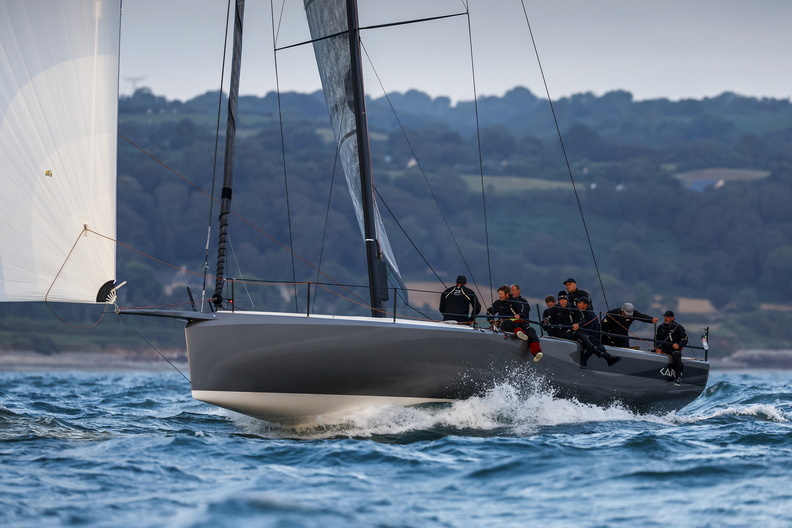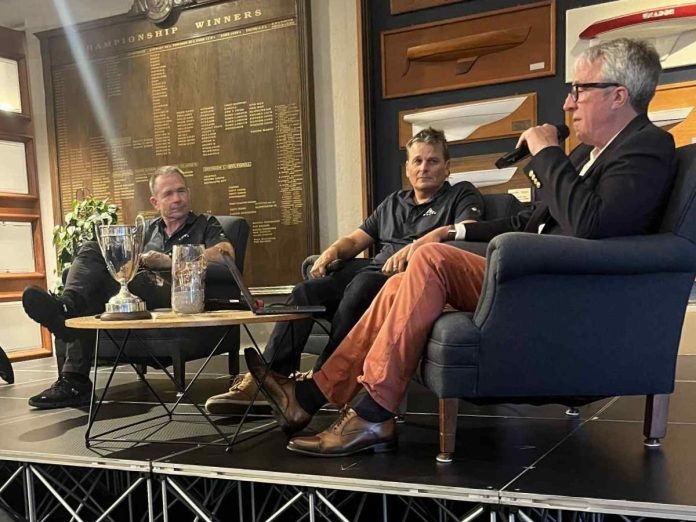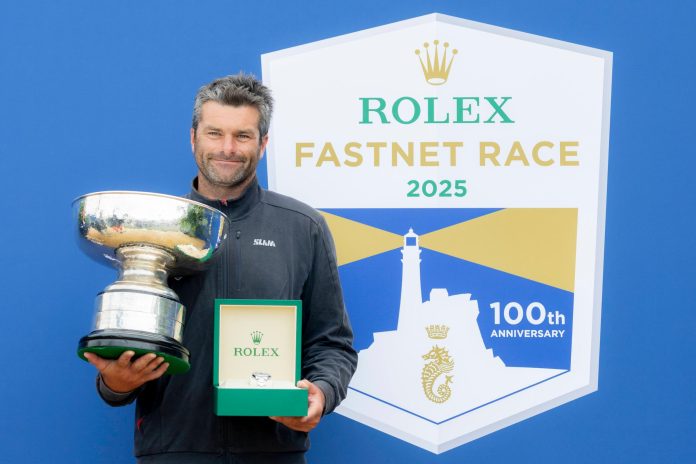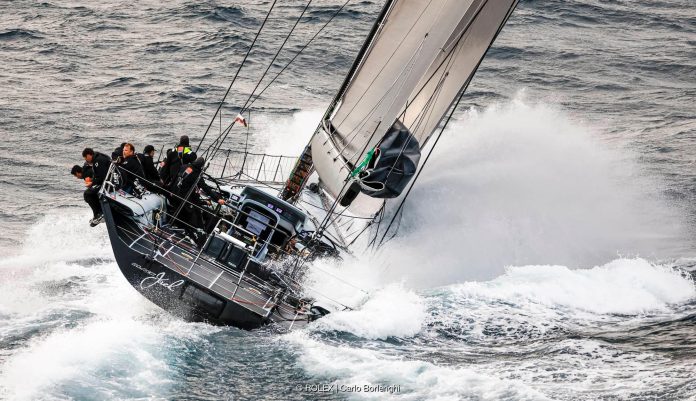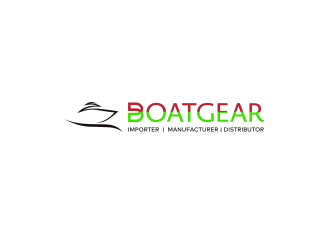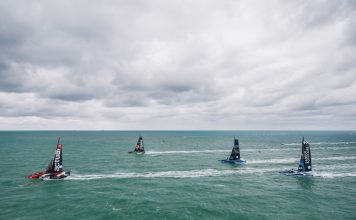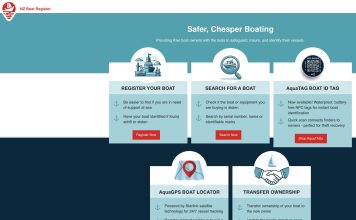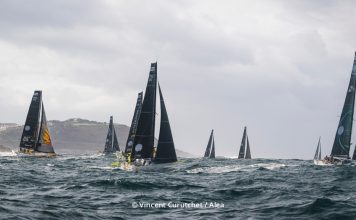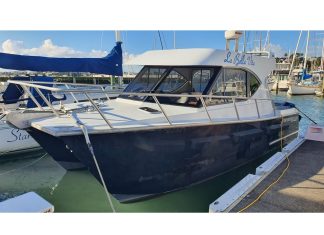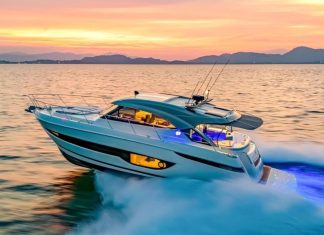One hundred years after seven yachts set off from Cowes on a mad, visionary challenge to round the Fastnet Rock and return, the Rolex Fastnet Race returns for its centenary. But this isn’t a history lesson. With 451 boats set to start on Saturday 26 July — smashing the 2023 record of 430 — this edition is about the now: the technology, the talent, and the sheer scale of the world’s most iconic offshore race.
The fleet spans 57 nations and every type of sailor. From teenagers sailing double-handed in sub-10m cruisers to round-the-world pros flying Ultim trimarans, it’s a democratic start line like no other. Olympic medallists, Vendée Globe heroes, America’s Cup tacticians and sailing school first-timers will all cross the Royal Yacht Squadron line bound for Cherbourg-en-Cotentin via the Fastnet Rock and Bishop Rock. It’s offshore sport at its most ambitious.
Big boats, bigger ambitions
In the Ultim class, four 32-metre foiling multihulls will race the clock and each other. SVR-Lazartigue, skippered by François Gabart and Tom Laperche (and carrying New Zealand sailing star, Peter Burling), set the outright record in 2023 and returns as the benchmark. Maxi Banque Populaire XI, Sodebo Ultim 3 and Actual Ultim also line up with eyes on a sub-24-hour finish. These aren’t just the fastest boats in the race — they’re some of the fastest boats ever built.
IRC Zero, the hotbed of overall contenders, is where the corrected-time winners are most likely to come from. Eric de Turckheim’s Teasing Machine (NMYD 54) enters red-hot after victories in the RORC Transatlantic, Caribbean 600 and Myth of Malham. Chasers include Warrior Won, Ino Noir, Albator and Rán. Mark Emerson’s Phosphorus II, originally Teasing Machine, is also tipped for a strong result.
Meanwhile, monohull line honours may come down to Hong Kong’s SHK Scallywag 100, Australia’s Black Jack 100 and US-flagged Rambler 88. All three are capable of blistering pace and pushing for the unofficial Fastnet “triple”: line honours, IRC overall and record.
Class by class
IRC One sees French legend Géry Trentesaux return for his 18th Fastnet race. IRC Two is stacked with JPK-built designs, particularly the JPK 11.80s. IRC Three offers a potent mix of owner-driver campaigns and seasoned Fastnet veterans, while IRC Four is the beating heart of the race: 97 entries ranging from family cruisers to toughened classics.
The double-handed division continues its rise, with more than 80 boats racing two-up. Many are fast, modern platforms run by expert sailors who thrive on the unique demands of short-handed competition.
In the grand prix ranks, the IMOCA 60s bring Vendée Globe pedigree, and the Ocean Fifty class of 50-foot trimarans promises high-speed drama. Class40 has grown in both size and innovation, with several foiling Musa 40s tipped to challenge the French veterans.
Multihull interest peaks in MOCRA, where a record 20+ entries will chase the Crystal Trophy. These performance cats and tris, some crewed by cruising sailors, others by full pros, show how wide the race’s appeal has become.
Admiral’s Cup: national pride on the line
Back for the first time since 2003, and reinstated into the Fastnet for the first time since 1993, the Admiral’s Cup is more than a sideshow — it’s a race within a race. Fifteen two-boat teams are competing under national or club banners. After three inshore races, Yacht Club de Monaco leads the standings on 27 points, just one point ahead of Royal Hong Kong Yacht Club. Royal New Zealand Yacht Squadron and Italy’s Yacht Club Costa Smeralda are tied on 34, with Sweden’s Rán-led team close behind.
Monaco’s strength lies in its twin TP52s, Jolt 3 and Jolt 6, stacked with Cup-level talent including Ed Baird and Will Harris. Hong Kong fields Karl Kwok’s Beau Geste is always fast, always tidy. New Zealand brings offshore-winning depth with Caro (a Botin 52 and the 2023 Fastnet IRC overall winner) and the lively GP42 Callisto. Rán 8, Sweden’s weapon, sails under Niklas Zennström and boasts a Volvo-laden crew.
The Fastnet leg counts for triple points. That means even minor shifts offshore — a wrong gybe angle at the Scillies, a mistimed tack at the Rock — could swing the Cup entirely. Tactically, emotionally, this will be the defining stretch.
Offshore theatre
What unites this sprawling fleet of Ultims, 100-footers, production cruisers and student teams is the drama of the course. The tide gates at Hurst and Portland. The long slog past Land’s End. The haunting grey bulk of Fastnet Rock. The gamble of the return leg across the Channel. And finally, the tactical chess of threading the Raz Blanchard at Cherbourg.








